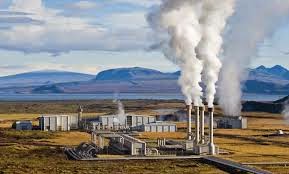
When we use heat from the Earth to generate energy it’s called geothermal energy. The name geothermal is a combination of the word “geo”, which means earth, and “thermal”, which means heat.
History of Geothermal Energy
Uses of Geothermal Energy
There are three main ways that we harness and use geothermal energy:
- Geothermal heat pumps – Geothermal heat pumps take advantage of this constant temperature to heat or cool water. By moving water through the Earth it can be heated in the winter or cooled in the summer. This water can then be used by a heat exchanger to heat or cool the air in a home. This can be a very efficient and inexpensive way to heat or cool buildings.
- Direct use – Another way to take advantage of the Earth’s heat is to directly use hot water from hot springs. This water can be used with heat exchangers to heat up homes and buildings. It also can be used to heat pools.
- Generating electricity – Finally, geothermal energy can be used by power plants to create electricity. Power plants take advantage of extremely hot water that is between one and two miles deep in the Earth. Some power plants pipe the steam directly up to the generator. They are called dry steam power plants. Other power plants, called flash steam plants, use high pressure from deep in the Earth to create steam to drive the generator.
Probably the main disadvantage to geothermal energy is the cost. It can be very expensive to build a geothermal plant. Building a plant can also be risky for a power company as the steam can potentially run out at a given site. The main environmental disadvantage is the possibility of releasing toxic gasses when the well is drilled into the ground.
Also Read: Renewable Energy (RE): Promoting ‘Make in India’
Facts about Geothermal Energy
- The majority of geothermal electric plants in the United States are found in the western portion of the country. California is the number one producer, followed by Nevada, Utah, Hawaii, and Idaho.
- The United States is the largest producer of geothermal electricity.
- In 2011, the Philippines generated around 16% of their total electricity using geothermal electric plants. Iceland produced 26% of their total electricity using geothermal energy.
- It is possible for geothermal electric plants to cause earthquakes.
- The best place to find geothermal resources is along plate boundaries. This is also where you find the most volcanoes and get the most earthquakes.
Don’t Miss:

